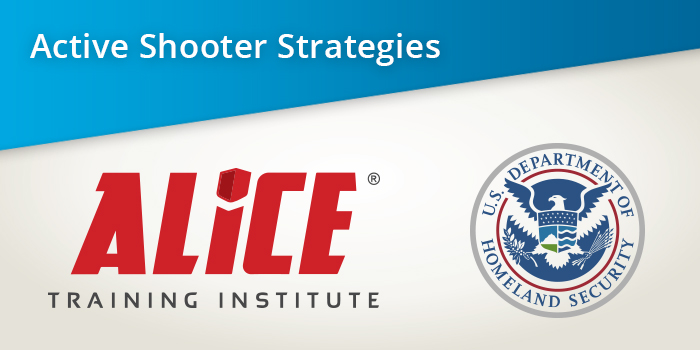Use Active Shooter Strategy to Keep People Safe in Dangerous Situations
Organizations use our InformaCast emergency notification system to help spread critical information to large groups of people quickly. Since it is used in a variety of industries, it is deployed for a wide variety of possible situations, including active shooter scenarios. Customers will often ask if we can help them develop active shooter strategies, and while this isn’t a service Singlewire currently offers, we have experience with other strategies that our customers have implemented and found success with.
Two such strategies are the ALICE Training program and the Run. Hide. Fight strategy from the Department of Homeland Security (DHS). The goal of this blog post is not to declare a winner between these two strategies but to provide an objective look at what each offers so organizations may determine which is the best fit for them.
ALICE Training
ALICE Training is based around five key tenants that make up its name: alert, lockdown, inform, counter, and evacuate. It recommends that the most important first step is making people aware a crisis situation is taking place so people can begin responding to it (alert). Once people are alerted, ALICE encourages people to lock down the room they are in, especially if it is unsafe to evacuate. While the situation is underway, people should utilize the tools they have available to inform others about the location of the active shooter, and the direction the person is headed. As a last resort, if someone encounters the shooter, they are encouraged to disrupt their ability to shoot by creating any form of distraction (counter). It is important to note that this is not considered the same as confronting the shooter to fight them. Finally, once people know it is safe to do so, ALICE instructs people to evacuate.
DHS Strategy
The DHS, on the other hand, leads with evacuation (the “run” portion). The goal is to get people out of the area where the shooter is and to a place where they can contact authorities and prevent others from entering a dangerous situation. If evacuation is not a viable option, DHS recommends hiding in a place outside the shooter’s view where people can protect themselves but not be trapped. This part of the active shooter strategy may vary depending on the location of the shooter in relation to the person. Again, as a last resort, DHS recommends trying to disrupt or incapacitate the shooter through loud noises or aggressive acts such as throwing objects at the shooter.
Additional Resources
The ALICE and DHS websites offer numerous resources to further prepare for active shooter scenarios. As we have only given a brief introduction of each of these strategies, additional research may be required to determine if either is right for your organization. For ALICE, look at different training options, videos and documents available, and for DHS, analyze different workshop options, videos, and resource materials.
Selecting the Best Active Shooter Strategy for You
These aren’t the only two options available, and choosing which one of these options is best for your organization will depend on a number of factors. The size of your organization, grounds, and the industry you work in are just some things to consider. Assess your needs, what similar organizations are doing, and how they match with different active shooter strategies to determine which will be best for you.
